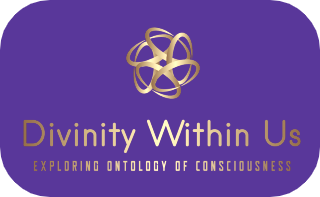Understanding the Spiritual Triad
The concept of the Spiritual Triad, as articulated by Djwhal Khul in the teachings of Alice Bailey, provides profound insights into the higher dimensions of human spirituality. This triad represents an essential aspect of our spiritual hierarchy, functioning as a bridge between the divine source and the lower levels of personality characterized by physical, emotional, and mental bodies. To comprehend the Spiritual Triad, one must first understand the distinctions between its higher representations and the more tangible aspects of human existence.
The Spiritual Triad itself is composed of three primary components: the Atma (will or spirit), the Buddhi (intellect or intuition), and the Manas (mind). Together, these elements chart a path towards our higher consciousness, facilitating the soul’s evolution. Each of these components plays a crucial role in shaping our spiritual journey, offering a means to connect with the Monad, the pure essence of spirit. In contrast, the lower personality operates within the confines of the physical and mental planes, often driven by desires, emotions, and survival instincts.
This dynamic interplay between the Spiritual Triad and the lower personality is vital in understanding one’s spiritual development. The Spiritual Triad serves as an intermediary, guiding the lower self in its quest for enlightenment and ultimate reunification with its divine origin. It is through the integration of these higher aspects that individuals can transcend the limitations of the physical realm, fostering a deeper connection with their true essence.
In summary, the Spiritual Triad encapsulates the higher dimensions of spiritual existence, transcending the mundane nature of personality. By fostering this connection, individuals can embark on a transformative journey towards greater consciousness and a more profound understanding of their place within the cosmos.
The Components of the Spiritual Triad
The Spiritual Triad is a profound concept that encompasses three primary components: Atma, Buddhi, and Higher Manas. Each element plays a crucial role in the quest for higher consciousness and represents unique aspects of the divine essence, thereby contributing significantly to spiritual development.
Atma, often referred to as the spiritual will, represents the core of individual identity and is the driving force behind spiritual aspiration. It embodies the will or power that propels individuals toward their ultimate purpose. In many spiritual traditions, Atma is seen as the divine spark within each person, urging them to aspire to higher realms of existence. Engaging with Atma cultivates a profound sense of autonomy and alignment with one’s true nature, encouraging the practitioner to develop their inherent potential and pursue higher states of being.
Following Atma is Buddhi, which can be understood as spiritual love-wisdom. Buddhi transcends intellectual understanding and delves into a deeper comprehension of love and compassion. It brings forth insights that guide individuals to act with empathy and altruism in their daily lives. The wisdom derived from Buddhi transcends mere knowledge, as it is rooted in the understanding of interconnectedness among all beings. Cultivating Buddhi allows one to experience a deeper connection to others and fosters the development of meaningful relationships built on love and mutual respect.
Lastly, Higher Manas represents the abstract mind, the capacity for higher reasoning and cognitive abstraction. This component engages in creative thought, allowing for the synthesis of ideas and principles that transcend ordinary understanding. Higher Manas is instrumental in the awakening of intuition and the integration of knowledge, facilitating a deeper exploration of spiritual truths. Through the harmonization of Atma, Buddhi, and Higher Manas, individuals can access the multifaceted nature of divine consciousness, elevating their spiritual journey and paving the way for greater self-realization.
The Role of the Spiritual Triad in Personal Growth
The Spiritual Triad, which comprises the higher aspects of an individual’s consciousness, plays a crucial role in personal growth and spiritual development. It serves as a gateway, allowing individuals to connect with their higher selves and facilitate significant transformational experiences. Access to this triad is often realized during periods of spiritual awakening, where alignment with one’s soul becomes essential. Such awakening fosters an understanding of one’s true nature and potential, promoting not only personal development but also a deeper connection with the universe.
Key practices such as meditation, selfless service, and alignment with divine principles are instrumental in refining the lower aspects of the personality. Meditation, in particular, aids in quieting the mind and fostering inner peace. Through consistent practice, individuals refine their mental and emotional states, allowing for greater clarity and a better connection to the Spiritual Triad. This form of introspection opens up pathways to deeper insights and awareness, facilitating the dissolution of ego and the embrace of higher consciousness.
Selfless service also embodies a principle that aligns with the energetic vibration of the Spiritual Triad. Engaging in acts of kindness and compassion expands one’s sense of purpose and alignment with greater universal truths. Such involvement not only nurtures personal growth but also promotes communal well-being, reflecting the interconnected nature of existence. Moreover, connecting with divine principles encourages individuals to develop qualities such as patience, humility, and love—qualities that are essential for spiritual ascendancy.
Ultimately, the transformative influence of the Spiritual Triad becomes apparent as individuals embark on their journeys toward self-realization. By engaging actively with these practices, they align with their higher purpose, leading to profound personal growth and the realization of their fullest potential within the cosmic tapestry of life.
Spiritual Path and Unity with All Life
Traversing the spiritual path can be profoundly transformative, guiding individuals towards deeper understanding and unity with all living beings. The Spiritual Triad serves as an essential framework in this journey, acting as a bridge to the Monad, which represents the highest aspect of consciousness. Through this triad, individuals find a pathway to elevate their awareness, ultimately fostering a deeper connection to their spiritual essence and to the divine source that sustains all life.
The soul, in its role as an intermediary, connects the personality to the Spiritual Triad. This connection is vital as the awareness of one’s soul opens avenues for personal transformation. By recognizing the soul as a part of a greater whole, one begins the process of aligning with the divine plan. Such alignment is not merely an act of personal benefit; it extends beyond the individual, promoting unity with all forms of life. This unity is critical as it highlights our interconnectedness and the shared journey toward higher consciousness.
Engaging consciously with the Spiritual Triad encourages individuals to surrender to the greater evolutionary purpose of their existence. This surrender is liberating, permitting individuals to step beyond the confines of ego and embrace a more expansive view of life. As individuals align their intentions with the divine will, they contribute to a collective awakening, fueling the emergence of higher consciousness within themselves and the community. It is through this spiritual alignment that one can achieve realization of the true essence, linking personal growth to universal evolution.
Ultimately, the process of progressing along this spiritual path illuminates the profound interconnectedness of all existence. It reveals the importance of aligning with the divine plan to foster personal and collective transformation. Embracing this unity opens doors to a richer, more fulfilling spiritual journey that transcends the individual experience, connecting us all to the infinite divine source.





